JAPAN
History

History

Cities in JAPAN
| Kyoto | Osaka | Tokyo |
History
The oldest inhabitants
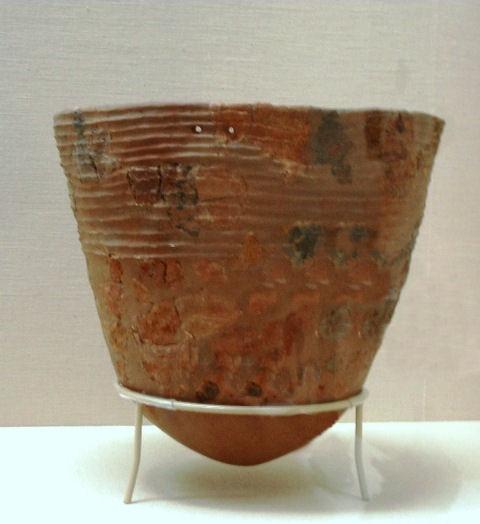 Vase from the Jommon period JapanPhoto: Public domain
Vase from the Jommon period JapanPhoto: Public domain
The origin of Japan's first inhabitants is uncertain. What is certain is that there was a wave of emigration via Siberia and Korea when Japan was still tied to the mainland of East Asia. But it is also possible that seafaring immigrants from Polynesia have landed on Kyushu and Okinawa. It is likely that the Japanese population originated from a mix of all kinds of cultures.
Remains of the Paleolithic Gongenyama cultures (60,000-50,000 BC) have been found after the Second World War. Other evidence of civilization is pottery from the Neolithic period around 10,000 BC. This Jomon period was so named after the rope motifs in the clay. The Jomon people were hunters and gatherers. The Jomon period is divided into five stages on the basis of the shapes and further decorations and lasted from 10,000 to about 250 BC.
After this period the gradual transition to the bronze and iron culture of the Yayoi period followed. Red-colored potsherds have been found in the Yayoi district of the current capital Tokyo, hence the name of this period. There is an idea that there have been connections with Korea and the main achievements have been the cultivation of rice, introduced from China through Korea, and the use of bronze and iron utensils. The Yayoi period lasted from 300 BC. to 300 AD.
From the Yayoi culture emerged the Kofun culture (burial mound culture) which has resulted in thousands of enormous burial mounds in Central and Western Japan. The custom of using these large funerary monuments came to an end with the advent of Buddhism, which advocated cremation.
During this time, more and more settlements started to work together to defend their land and eventually the Yamato clan managed to make a kind of alliance that all tribes could agree with around 300. Claimed to be descended from the sun goddess Amaterasu, the Yamato leaders introduced the title tenno, emperor, around the 5th century. As a result, Japan could henceforth be regarded as one nation stretching from Kyushu in the south to Honshu in the north.
Yamato already had special contacts with Korea since the 4th century. Between the two southern kingdoms, Paekche and Silla, was a small area, called Mimana in Japanese annals, where a kind of governor of Yamato existed and where Japanese troops were stationed. The area was a kind of base of mainland culture to Yamato and in the mid-6th century Buddhism was introduced and further developed in Japan via China and the Korean kingdom of Paekche.
First Imperial Dynasties
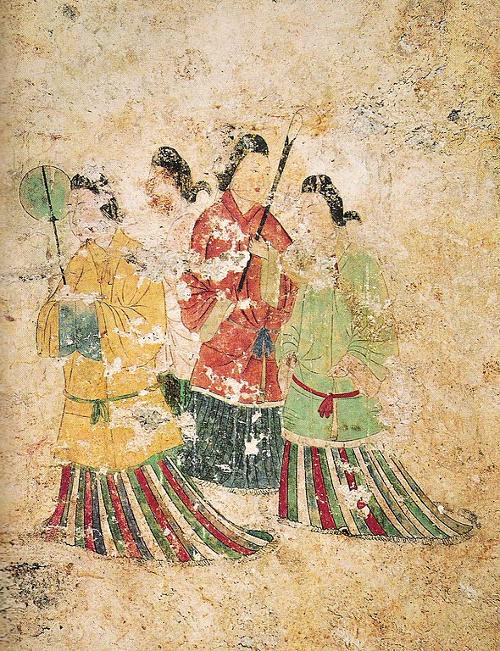 A wall mural depicting ladies late 7th century JapanPhoto:Mehdan CC 3.0 Unported no changes made
A wall mural depicting ladies late 7th century JapanPhoto:Mehdan CC 3.0 Unported no changes made
In 562 the Japanese were expelled from Mimana by Silla, the neighboring people of Paekche, and a decline set in. This decline of Yamato was halted by Prince Shotoku who made some kind of constitution and set guidelines for a centrally administered state with only one ruler. He also made Buddhism the state religion. All kinds of other elements of Chinese culture were also introduced to Japan, such as medicine, music, astronomy, visual arts and, most importantly, Chinese writing. Initially, all these things reached Japan through Korea, but eventually more and more direct contacts began to be sought with the so-called Middle Kingdom and in 607 an official envoy was first sent to the Chinese court.
The takeover of Chinese cultural heritage reached its peak during the so-called Taika Reform between 645 and 702, in which the administrative system of the Chinese T'ang Dynasty (618-907) was taken over in its entirety. As a result, all private ownership of land and serfs was abolished by declaring all land the property of the emperor and all the people his subjects. As a result, the emperor, as a descendant of the Sun Goddess Amaterasu, was not only the high priest of the country but also became worldly ruler, just as was the case in China. The clans (uji) were no longer the main social and political units and the clan chiefs were appointed officials of the emperor.
However, this administrative system of the gigantic T'ang Empire did not fit the relatively very small Yamato Empire at all and the aristocratic descendants of the former clan chiefs did not intend to relinquish their power and competencies and the civil service remained and therefore in fact governed by the nobility. Confucianism became increasingly widespread during the period of the Taika Reformation, although it was not until centuries later that it would determine Japanese views on ethics.
Thanks to family feuds and seizures of power, government and laws were constantly changing. For example, the tradition of each new ruler changing the place of the capital came to an end and a permanent capital was chosen for the first time. In 710 it became Nara, which remained the capital until 794. During the Nara period, Buddhism was highly promoted, especially under Emperor Shomu. This period became the first glorious period in the history of Japan, especially in the field of construction and sculpture, and began to take its own direction in Japanese culture.
Towards the end of the 8th century, the Buddhist clergy became so involved in politics that Emperor Kammu decided to move the capital from Nara to Heian-kyo (now: Kyoto). All this to stop the growing influence of the cleric. Like Nara, Heian was modeled after the Tang Dynasty capital of China Chang-an (now: Xi'an). Heian-kyo would remain the capital of Japan until 1868. The Heian period was characterized by flourishing arts and important developments in religious thought. The Chinese immigrants brought all kinds of ideas and customs that were adapted to the Japanese situation. Rivalry between traditional Japanese Shinto and Buddhism was prevented by depicting Shinto gods as Buddhas. Religion and state were disconnected and two new sects were brought from China by Japanese monks, Tendai and Shingon, who became the pillars on which Japanese Buddhism was built. During the Heian period, there was also more emphasis on leisure and science development and less on government.
Fujiwara Dynasty
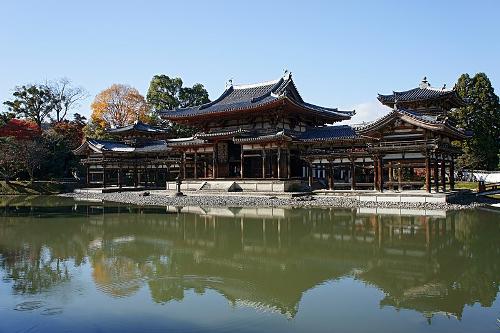 Byodo-in ("Phoenix Hall"), built in the 11th century, Kyoto JapanPhoto: 633highland CC 3.0 Unported no changes made
Byodo-in ("Phoenix Hall"), built in the 11th century, Kyoto JapanPhoto: 633highland CC 3.0 Unported no changes made
The noble Fujiwara family took advantage of this by taking important positions at court between the 9th and mid-12th centuries through all kinds of devious maneuvers. They further derived their power from the use of the donations of sho-en, land property, which the emperor gave to Buddhist monasteries, princes and high officials as a reward for merit. These sho-en remained in the name of the emperor, but were tax-free and under the jurisdiction of the provincial governors. They steadily increased in number over time, and by the 11th century half of the country was made up of sho-en; moreover, certain large landowners assumed the right to declare their areas sho-en themselves.
The Fujiwara became stronger and more powerful, but the landed gentry also developed more and more because the Fujiwara were mainly concerned with politics in the capital. Around 1150, the noble Taira family briefly took over power from the Fujiwara, but soon had to relinquish it to the Minamoto family (also known as Genji) after the Battle of Dannoura in 1185. In 1192, Yoritimo captured Minamoto all Honshu and for the first time in the history of Japan the country was ruled by one family. Yoritimo was given the honorary title Sei-i-tai-shogun (abbreviated: shogun) from the emperor and this title became hereditary for life to the military leaders of Japan. Until 1868, the shoguns were the de facto rulers and the emperors were heads of state in name only. It was therefore typical that the emperor continued to live in Tokyo and that Yoritomo made Kamakura the capital. Yoritomo ruled in a feudal way and did not even shy away from removing his own relatives who got in his way. In 1199 Yoritomo fell from his horse and died, after which in 1205 the powerful Hojo family, to which his wife belonged, took over.
In 1219 the last shogun of the Minamoto family died. Since then, imperial princes and members of the Fujiwara family were appointed shogun, but the Hojo continued to exercise the regency. During this period, Buddhism became increasingly popular, especially with the introduction of Zen Buddhism among the samurai. In 1259, the Mongols led by Kublai Khan reached Japan and sent envoys to induce the Japanese to surrender. However, these emissaries were expelled from Japan and in response the Mongols sent an invading force to Japan in 1274 and 1281.
However, Tokimune of the Hojo family was able to repel both raids and was helped both times by typhoons that destroyed the Mongol fleet. These typhoons were called kamikazes (kamikaze = divine wind). However, the treasury was empty and the power of the samurai class was increasing. Emperor Go-Daigo tried to take advantage of this situation and led an unsuccessful uprising against the government and was exiled to the Oki Islands. A few years later he tried again and was now more successful; in 1319 he ascended the throne. Emperor Go-Daogo, however, made the mistake of rewarding the aristocracy and priests and not his soldiers. This led to an uprising organized by the defected Hojo General Ashikaga Takauji who defeated Go-Daigo at the Battle of Kyoto. He appointed a new emperor, proclaimed himself a shogun, and settled in Muromachi near Kyoto.
A period of continuous wars followed in the 14th century, particularly between the two imperial courts in Central Japan who fought each other fiercely at the time. The Southern Dynasty was led by the runaway Go-Daigo and his successors; the Northern Dynasty consisted of a member of the imperial family enthroned by Ashikaga and his successors. This conflict gave the feudal rulers (called daimyo) ample opportunity in the rest of Japan to expand their power and territory. However, it was not all doom and gloom that struck the clock in the Ashikaga peridu. Buddhism had already been renewed and more popular in the Kamakura period, and Zen Buddhism also appealed to the imagination. But architecture, painting, landscaping and flower arrangement (ikebana) also flourished.
Foreign trade flourished as several daimyô established important trade relations with China and Southeast Asia. In 1467 the Onin War broke out which developed into an all-out civil war and accelerated the crumbling of Ashikaga's power. This period lasted until 1576 and has become known as Sengoku-jigai. Politically, Japan at the time was without central authorities. That would change again in the Momoyama period. In 1568, Oda Nobunaga, through his military insight, ensured that the road to peace and unity was set in Central Japan. He also conquered many central provinces and broke the great power of the Buddhist monasteries. Before he could finish his job, however, he was betrayed by one of his generals, Akechi Mitsuhide. As ruler, Oda was succeeded in 1582 by Toyotomi Hideyoshi, remarkably likely a farmer's son. He succeeded in bringing the entire country back under government in 1590. He then became overconfident and attacked Korea and China with a great expeditionary force. However, attempts in 1593 and 1598 failed, the last time because Toyotomi died.
First contacts with Western countries
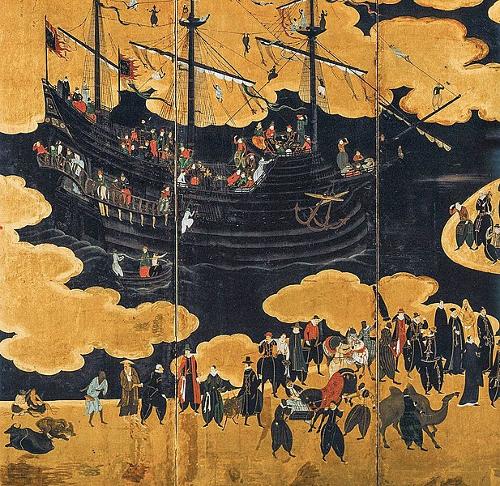 Portuguese Trading Ship in Japan in the 16th centuryPhoto: Hugo Refachinho CC 4.0 International no changes
Portuguese Trading Ship in Japan in the 16th centuryPhoto: Hugo Refachinho CC 4.0 International no changes
In 1543, the first contact with the West was made with Portuguese traders and a few years later by missionaries, initially Portuguese and later Spaniards. In 1549 the Jesuit Francis Xavier arrived in Kagoshima and local monarchs were quickly converted in exchange for trade benefits and weapons. Oda did see advantages of Christianity as a counterpart to Buddhism. Toyotomi, on the other hand, feared that the new religion would undermine his leadership. Ordinances were issued against Christianity, and in 1597 26 priests and Japanese converts were crucified.
Toyotomi Hideyoshi's army was defeated at the Battle of Sekigahara in 1600 by his former ally Tokugawa Teyasu. Tokugawa resided in Edo, present-day Tokyo, and assumed the title of shogun. The emperors continued to live their shadow existence in Kyoto. During the Tokugawa or Edo period, persecution and outlawing of Christians continued, reaching a low point in 1637 with the bloody crackdown on the Christian-led Shimabara rebellion. This brought an abrupt end to the Christian period, although Christianity continued underground and was officially permitted again at the end of the 19th century.
The Tokugawa family organized a kind of centralized police state, in which, for example, all daimyo, the shogun's feudal men, stay in the capital for a certain period of time and an equal period on their fiefs. The Tokugawa family controlled all major cities, major ports and all mines; the rest of the country was under the control of free autonomous daimyo. Their wives and children, however, remained constantly in Edo as a kind of collateral. The Japanese were also forbidden to travel abroad. These measures forced the daimyo to remain loyal to the Tokugawas.
The population of Japan at that time was strictly divided into four classes. The samurai or warriors were at the top of the ladder. The samurai included the shogun, the daimyo and all military personnel. Famous artists, scholars and doctors also belonged to this group. Then came the farmers, then the craftsmen, and finally the merchants. The pariah groups Eta and Hinin were excluded from everything. All classes in society were subject to strict rules that governed their lives down to the smallest detail. Social mobility between classes was also practically impossible.
Main causes of these measures were the fear of Westerners' interference in internal affairs and of colonization. Anti-Christianity and threats to the Japanese economy also played an important role. Under the Tokugawa regime, Japan almost completely isolated itself from the outside world (sakoku). Only the Dutch on the island of Decima, the Chinese and the Koreans could maintain contact with Japanese traders under strict supervision. The positive thing about the Tokugawa period was that it took place in relative calm. Remarkable was the transition from a rice economy to a money economy, as a result of which the position of the merchants became increasingly important and powerful. This in turn was at the expense of the samurai class, which was increasingly declining and dependent on the merchants. As a result, culture, especially art and literature, became more and more bourgeois and the study of the exact sciences became increasingly important.
The official doctrine of the state in this period was neo-Confucianism, borrowed from China, which was perfectly in keeping with the feudal relations prevailing in Japan at that time. Around 1800, the Tokugawa government suffered from corruption and development stagnation. Famines and poverty among the peasants and the samurai caused uprisings, which, however, caused little damage due to the rigorous police system. A far greater danger was the growing power of the daimyô in western and southern Japan. They had always been opposed to the shogun system. Intellectuals too hoped for a return to the emperor's power.
In addition, countries such as Russia, the United States and Great Britain became more and more imposing and fears grew that Japan's independence would be brought to an end from outside.
Diplomatic and economic opening of Japan
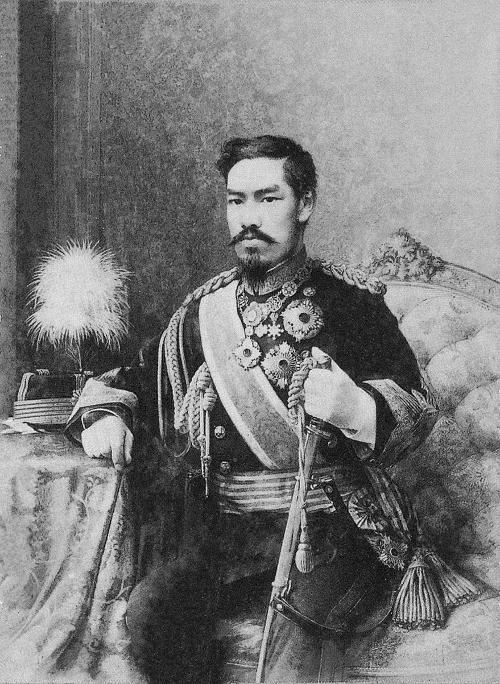 Emperor Meiji JapanPhoto: Public domain
Emperor Meiji JapanPhoto: Public domain
In 1853, the American Commodore Matthew Perry, on behalf of the President of the United States, asked the Japanese government to restore trade relations. Other countries also called for the opening of trade ports and the relaxation of trade barriers. The Shogun government, signed a provisional treaty on March 31, 1854, opening the ports of Shimoda and Hakodate and soon further diplomatic negotiations were to be launched. The first American consul general arrived in 1856 and treaties were also concluded with other countries. However, there were many opponents to the further opening up of the country and they also targeted the foreigners themselves.
In particular, the fact that treaties had been concluded without the approval of the emperor caused bad blood. Nevertheless, in 1865 the emperor ratified the treaties with the foreigners. In 1866, two powerful daimyo areas (Satsuma and Choshu) from Western Japan united and finally on November 9, 1867, the last shogun, Tokugawa Yoshinobu, resigned and Emperor Meiji took over. On January 4, 1868, the shogunate was abolished by imperial decree. This restoration of imperial power is also referred to as the Meiji Restoration because of the many innovations introduced during this period. For example, in 1869 the imperial capital was moved from Kyoto to Edo, which from then on was called Tokyo, the "Eastern Capital."
In 1871 the feudal daimyo fiefs were abolished and Japan was divided into prefectures, abolishing feudality and granting equal rights to all estates. Furthermore, a new monetary system was introduced, state post offices were established and the first railway, Tokyo-Yokohama, was opened.
In 1872 a new education system was introduced (compulsory education) and in 1873 general conscription was introduced. A series of uprisings of the samurai, which continued to lose power, ended with the Saigo uprising in 1877 in which the samurai were finally defeated and lost all power.
In 1882, the Bank of Japan was established and the first modern political parties emerged between 1882 and 1885. In 1885 a modern cabinet was formed and in 1888 a Secret State Council was established, after which a constitution was adopted in 1889. As a result, parliament met for the first time in 1890.
Foreign policy in the Meiji period was aimed at abolishing the unfavorable treaties with Western countries, better defending against possible enemies and acquiring colonies to secure raw materials for the emerging industry. Japan claimed the Russian Sakhalin, but after a treaty in 1875 had to settle for the Kuril archipelago.
Relations with Korea were more important. In 1876 Japan forced Korea to open some ports to Japanese trade and establish diplomatic relations. In 1879 the Ryukyu (Okinawan) kingdom on Taiwan was annexed by Japan. The interference with Korea brought Japan into conflict with China, which had special relations with Korea. In 1885, however, a treaty was made in which they established the independence of Korea and promised each other never to send troops to Korea without letting the other know. These agreements were not adhered to and that was the cause of the Sino-Japanese War of 1894-1895, which was won by Japan.
On April 17, 1895, the Shimonoseki peace treaty was signed and Japan was given Taiwan, among other things, and China had to pay war compensation to Japan. Korea was declared an independent territory again. This demand was not met by the intervention of Germany, France and Russia. Great Britain, meanwhile, was concerned about Russia's activities in the east and, as a result, increasingly approached Japan. Between 1894 and 1899, a number of treaties were signed, leading to the legal sovereignty of Japan and in 1911 it gained full autonomy.
In 1900 Japan gained prestige with the Western powers by suppressing the Boxer Rebellion in China. As a result, Manchuria was occupied by Russia. In 1902, an alliance was made between Japan and Great Britain and after that negotiations were started to curb Russia's drive for expansion in the east. However, the negotiations were unsuccessful and were broken off again on February 6, 1904. Morally supported by Britain, Japan declared war on Russia on February 11, 1904 and attacked the Russians in Manchuria and Korea. At the Battle of Tsu-shima, the Russian Baltic fleet was devastated.
For the first time, Japan got the idea that it was on an equal footing with the Western powers. The Portsmouth peace treaty on September 5, 1905 forced Russia to make many military, political and economic concessions. Another consequence of the war was that Korea became a protectorate of Japan and was completely annexed by Japan on August 22, 1910. On July 30, 1912, Emperor Meiji died and was succeeded by his son Yoshihito, whose first reign would become known as the Taisho period.
First and Second World War
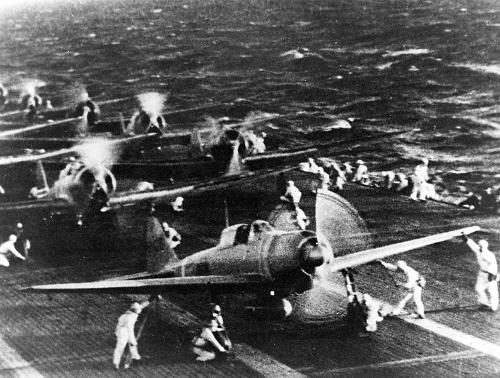 Japanese bombers are ready to attack Pearl HarborPhoto: Public domain
Japanese bombers are ready to attack Pearl HarborPhoto: Public domain
When World War I broke out in 1914, Japan sided with the Allies, but otherwise hardly participated in the hostilities. In Asia, Zingdao Fortress and the German colony in Giaozhou were conquered as well as some German possessions in the Pacific, including the Mariana Islands and the Marshall Islands. And while the Allies engaged in the war, Japan took the opportunity to build a rock-solid economic position in Asia through shipping and trade. In 1915, the "21 requirements" were imposed on China, intended to achieve a dominant position in China. With the exception of a few insignificant areas where Japan could occupy a special position, including Shandong and Eastern Inner Mongolia, China did not elaborate on this. Under the Versailles Peace Treaty, Japan acquired the former German island possessions north of the equator as mandated territories; from Giaozhou it withdrew three years later. Japan's expansion of territory at the expense of Russia would eventually turn against Japan again. For example, after World War I, the Washington Fleet Conference (1921/1922) was held, which stipulated that the size of the fleets of the United States, Great Britain, and Japan should be based on a ratio of 5-5-3. Also, the 1902 Anglo-Japanese Alliance was dissolved and the Japanese were forced to withdraw from Shandong in China and Siberia. Domestic social unrest led the government to chart a somewhat more democratic and liberal course. In 1918, Kei Satoshi Hara became Japan's first non-noble politician to become Prime Minister, voting rights were expanded, and Japan joined the League of Nations in 1920. The party system was also strengthened, allowing socialism to develop and in 1928 Marxist parties managed to win eight seats in the House of Representatives. In the same year, however, members of the communist party were also arrested and the influence of socialism diminished. Influenced by "zaibatsu", a financial clique of industrialists and bankers, a moderate and peaceful foreign policy was followed. Meanwhile, in 1926, Emperor Hirohito had ascended the throne and the Showa period began. He had traveled extensively throughout Europe, became acquainted with the European nobility and a follower of the British lifestyle.
The unhealthy economic structure led to a major banking crisis and many bankruptcies in 1927. The worldwide crisis in 1929 exacerbated the crisis in Japan and nationalistic feelings re-emerged. In addition, many countries erected so-called "tariff walls" which forced Japan to focus again on colonial expansion. Additionally, in 1924, the United States passed the Immigration Act prohibiting the immigration of Japanese to the United States. This gave military elements more and more influence on politics. In September 1931, an incident in Manchuria was staged by the military with the aim of making this rich area of resources completely dependent on Japan. On March 9, 1932, the unrecognized new state of Manchukuo was proclaimed, and in 1933 Jehol province was occupied and Japan exited the League of Nations. On May 15, 1932, a military uprising broke out in Tokyo and Prime Minister Takeshi Inukai was assassinated. The perpetrators were hardly punished, which was indicative of the weak position of politics at that time. In February 1936, under the leadership of junior officers and cadets of the army, another uprising took place in Tokyo. They held full control of the capital for three days and the Minister of Finance Takahashi, the former Prime Minister Saito and the head of military education General Watanabe were murdered.
On November 25, 1936, the Anti-Comintern Pact was concluded. The Comintern was founded in March 1919 with the aim of spreading the revolution in other countries. It was in theory an independent organization, but in reality it was heavily influenced by the Russian party. Meanwhile, Japanese policy on the mainland had become increasingly aggressive. After a new expansion of the Japanese sphere of influence in Northern China, the Sino-Japanese Incident broke out in July 1937, which was in fact an informal war between Japan and the nationalist government of Tjiang K'ai-shek. This incident, which led to a battle that was not decided until 1945, became the cause of new conflicts, which left Japan increasingly alone in the Pacific region, and especially relations with Great Britain and the United States worsened. For example, the US-Japanese Trade Treaty was cancelled on January 27, 1940, and on September 27 of the same year, the Three-Power Pact between Japan, Germany, and Italy was concluded. On October 12, 1940, the Taisei-yokusan-kai, the Organization in Support of the Imperial Government, was established. This organization replaced the political parties that had already been dissolved in August.
The Trinity Pact clearly demonstrated the hostility to Great Britain and the United States. Tensions rose in 1940 when the Americans stopped exports of fuel, iron and steel to Japan, followed by a complete export stop in 1941. For the Japanese military, the survival of Japan was now in jeopardy and the Todjo cabinet decided to wage war. On December 7, 1941, the Japanese raided the American fleet in Pearl Harbor, Hawaii, without a declaration of war. After a few days they attacked the Philippines and sank two English battleships.
Within six months, Japan had driven Western powers from all over East and Southeast Asia and occupied key strategic bases in the Pacific. In 1942, Japan controlled an area that reached 6400 kilometers south of Sakhalin and 7600 kilometers east of Burma. The turning point of the war came at the Battle of Midway, June 3-6, 1942. Earlier, the plan to conquer Australia had failed due to a defeat in the Battle of the Coral Sea. The Japanese were forced on the defensive by these defeats, and the Allies slowly approached the Japanese islands in mid-1943. In addition, the Japanese merchant fleet was largely destroyed, depriving them of much-needed raw materials. The constant bombing of Japan also made it more and more difficult for Japan. On June 21, 1945, Okinawa was conquered and the Japanese paid a very high price: approximately 260,000 Japanese civilians and soldiers were killed. The bombing of Japan was intensified. At the same time, an English offensive liberated Burma. During a massive air offensive (May-August 1945) the Japanese military was completely destroyed and many cities were destroyed.
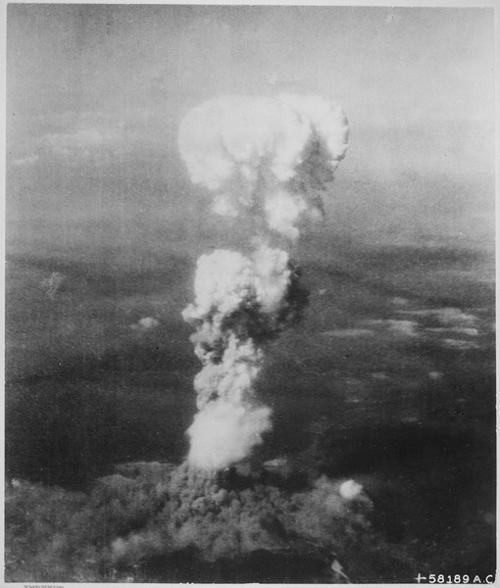 Atomic bomb on Hiroshima, JapanPhoto: Public domain
Atomic bomb on Hiroshima, JapanPhoto: Public domain
In July 1945, the Potsdam Conference took place, demanding the unconditional surrender of Japan. The Japanese refused, after which the Allies dropped an atomic bomb on Hiroshima, killing 80,000. The atomic bomb on Nagasaki was the final blow for Japan. On August 8, the Soviet Union declared war on Japan and invaded Manchuria.
The government of Japan now decided to capitulate on the condition that the emperor be maintained as sovereign. The Allies, however, declared that after the war ended, the form of government would be determined only by the will of the people, and the Emperor himself intervened by pressing for complete surrender (14 August 1945). The Koiso-Yonai cabinet, which replaced the Todjo cabinet in July 1944, resigned. Under the responsibility of a business cabinet, the capitulation was signed on September 2 in Tokyo Bay aboard the American battleship Missouri. Immediately after that, the eviction of all occupied territories and the occupation of Japan by American and Australian troops began. Japan remained occupied under the command of US General Douglas MacArthur until April 1952, after which it regained independence under a democratic constitution at the Treaty of San Francisco. But it wasn't until 1972 that Okinawa Island was returned to Japan.
Reforms and Economic Recovery
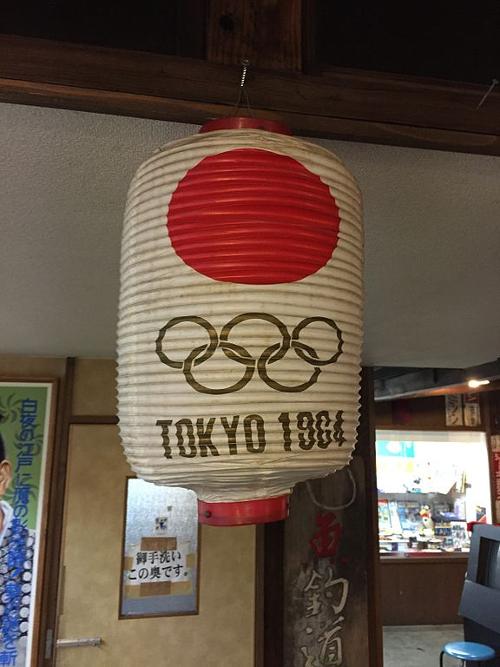 Tokyo Olympics 1964Photo: Stephen Kelly CC 2.0 Generic no changes made
Tokyo Olympics 1964Photo: Stephen Kelly CC 2.0 Generic no changes made
The United States allowed the government of the greatly reduced empire to be exercised by a Japanese government whose authority was to be subordinate to SCAP (Supreme Command[er] of the Allied Powers). There was also a strong emphasis on bringing war criminals to justice and removing militaristic and ultra-nationalist elements from the government.
Many other reforms were implemented under successive governments: the army was "permanently" abolished, education democratized, political and press freedom restored, and women's suffrage was introduced. On May 3, 1947, a new constitution went into effect and the first post-war elections on April 10, 1946 yielded profit for S. Yoshida who formed a liberal-progressive coalition cabinet. In the new constitution, all political power was removed from the emperor, leaving only a ceremonial function.
In the spring of 1954, the Security Pact with the United States was followed by a Pact for Mutual Assistance. The economic recovery program consisted of loans, limited exports, capital investment and spending cuts. In December 1954, the Yoshida cabinet was succeeded by a cabinet with Prime Minister Ichiro Hatoyama. This cabinet wanted to re-establish trade relations with the Soviet Union and China and reduce dependence on the United States.
In December 1956, Japan joined the United Nations. Hatoyama's successor, T. Ishibashi, was replaced by conservative and pro-American N. Kishi in February. On January 19, 1960, the Security Treaty between the United States and Japan was renewed, resulting in a series of anti-government and anti-American demonstrations. The ultra-left Blanquist student organization in particular played an important role in this. Kishi was forced to resign due to this issue and was succeeded by the Ikeda cabinet in July 1960.
The 1964 Tokyo Olympics were further proof of Japan's post-war recognition by the world community. In the same year the LDP (Liberal Democratic Party) of Eisaku Sato won the elections as well as in December 1969. During this period of government there were again many problems with student organizations that fought for fundamental university reforms. Also, in 1972, the Ryukyu Islands were returned to Japan by the United States. One of the conditions, however, was that an American base would remain on the islands. This also resulted in many protests. Eisaku Sato was succeeded in 1972 by Kakoeei Tanaka under whose rule the People's Republic of China was recognized and relations with Taiwan were severed.
In these years, the terror organization the Red Army became world known. In 1974 an embassy in The Hague was occupied and in 1972 an embassy in Tel Aviv. After a few scandals, Tanaka resigned in 1974 and was succeeded by Takeo Miki who also became involved in a bribery scandal (Lockheed affair) and partly because of this suffered a serious election defeat in December 1976 and resigned as leader of the LDP. Deputy Prime Minister Fukuda succeeded him as Prime Minister.
In 1978 Japan and China signed a peace and friendship treaty, but the unbridled export of products worsened the relationship between Japan and the Western countries. Fukuda was succeeded in November 1978 by his rival within the LDP, Ohira. Ohira remained prime minister even after the general elections in October 1979 that went badly for the LDP. However, this reign was not to last long, as the Ohira cabinet fell in May 1980 after a motion of no confidence. Shortly before the successful elections for the LDP, Ohira passed away and was succeeded by Z. Suzuki. Suzuki resigned in October 1982 due to the bad economic situation in Japan and divisions within the LDP.
Successor Yasuhiro Nakasone, also of the LDP, forged closer relations with the United States and increased Japanese involvement in international affairs. Accused of corruption, Tanaka refused to leave the LDP, forcing Nakasone to call early elections in December 1983. The LDP lost the election but Nakasone remained prime minister with a coalition government. This period of government was characterized by severe cuts in public spending, a reorganization of the government apparatus and the privatization of public companies such as the national railways. The July 1986 elections were largely won by Nakasone's LDP, but a split in that party forced Nakasone to resign from his position as party chairman and prime minister. It was the notorious troublemaker Tanaka who founded his own faction and took 113 members with him. Nakasone was succeeded by Noboru Takashita in November 1987.
Political instability and economic crisis
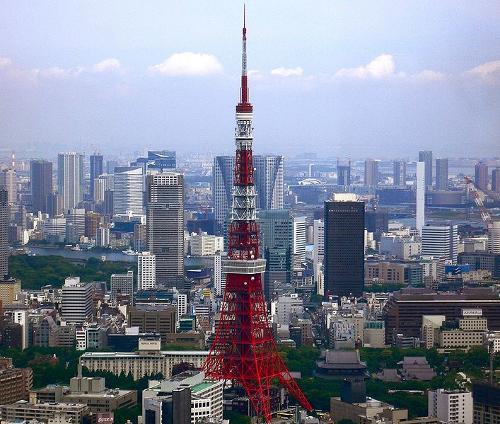 Skyline Tokyo 1990sPhoto: Volfgang CC 3.0 Unported no changes made
Skyline Tokyo 1990sPhoto: Volfgang CC 3.0 Unported no changes made
In turn, Takashita was forced to resign in June 1989 following the Recruit stock scandal. After the disastrous upper house elections for the LDP in July 1989, Toshiki Kaifu was nevertheless appointed prime minister. Former prime ministers Nakasone and Takashita involved in the scandal were re-elected to parliament, but Kaifu, involved in the scandal, was banned from his cabine . His position within the LDP was weakened by this principled position and he did not see a second term of office.
The new prime minister became Kiichi Miyazawa at the end of 1991, who accepted as many as nine "infected" ministers into his government. He piloted the "Law on Peacekeeping Operations" through parliament, which meant Japan was returning to United Nations peacekeeping operations, the first in Cambodia. The promised reform of the electoral system fell through, prompting early elections in July 1993 which did not turn out well for the LDP. The absolute majority was lost and for the first time in 38 years, the LDP did not participate in the government.
The new Prime Minister of Japan became Morihiro Hosokawa, the leader of the newly formed New Party of Japan. Less than a year later, Hosokawa was able to leave again due to dubious past business dealings and Hata 's minority government lasted only two months. In June 1994 the LDP fell apart into two factions. In January 1995, Japan was shaken by an earthquake in Kobe that killed more than 5,300 people and caused tens of billions of damage. Another disaster was the attack on the Tokyo subway several months later. The deadly nerve agent sarin killed 12 and injured 5,500.
Prime Minister Murayama resigned in early 1996 and was succeeded by LDP Chairman Hashimoto. He was re-elected as Prime Minister in November after the formation of a LDP minority government. In September 1997, Japan entered into an agreement with the United States that allowed it to engage in military activities outside its own territory for the first time since World War II. In 1997 also great commotion again due to illegal payments by directors of large companies to blackmailers. The finance minister of the Hashimoto cabinet was also forced to resign after taking bribes.
In July 1998, Hashimoto stepped down as Prime Minister following a defeat in the House of Lords elections and was succeeded by Keizo Obuchi, who recruited former Prime Minister Miyazawa as Finance Minister.
21e eeuw
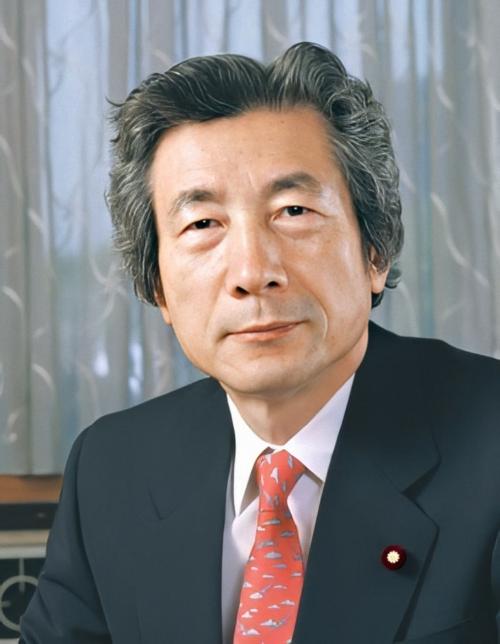 Koizumi JapanPhoto: Unknown CC 4.0 Internationaal no chages made
Koizumi JapanPhoto: Unknown CC 4.0 Internationaal no chages made
On April 2, 2000, Obuci suffered a cerebral haemorrhage and on April 5, Yoshi Mori of the LDP was elected prime minister by parliament, after having already been elected chairman of the party. Obuchi's policy of increasing government spending and stimulating foreign investment would be continued by Mori.
Junichiro Koizumi took office as Prime Minister of Japan on April 24, 2001. The government's highest priority was to restore economic growth. The government's foreign policy, particularly the dispatch of troops to Iraq, has generated much controversy, but has become more widely accepted along the way. However, Koizumi was initially unable to garner sufficient support for his internal economic reform program either within his party. This became painfully clear when, in the summer of 2005, his proposal for the privatization of the postal service (a very drastic multi-billion dollar operation) narrowly passed through the House of Commons, and was subsequently voted down in the House of Lords. Prime Minister Koizumi subsequently decided to dissolve the House of Commons and to call new elections for September 2005. The elections of September 11, 2005 resulted in a surprising victory for the Prime Minister personally. The public voted for the Japanese MP because of a great need for change (stagnant economy, unemployment, aging). The Japanese MP has managed to portray himself in the media as a great reformer and the other parties as conservative even though the LDP has been in power for 50 years (with short interruption). The opposition, the Democratic Party, also wanted the privatization of the postal services (but different), better ties with Asian countries and increased taxes to get rid of the huge government deficit (160% of GDP). The privatization of the postal services has not been hindered politically. However, public expectations have risen to great heights due to the elections. MP Koizumi does not have a clear reform program to tackle the many problems in Japanese society such as an aging population, rising health care costs, etc. Koizumi and the LDP (Koizumi will step down in September 2006) will have difficulty living up to the expectations that have arisen. His successor, Abe, will lead the LDP through the local elections in April and the elections for half of the upper house next summer.
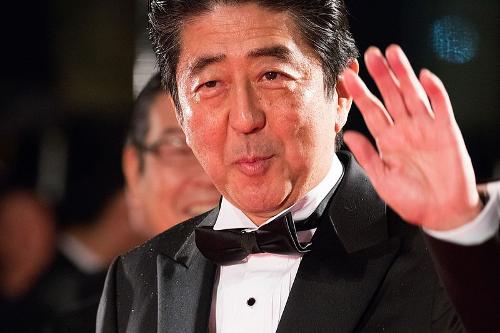 Abe JapanPhoto: Dick Thomas Johnson CC 2.0 Generic no changes made
Abe JapanPhoto: Dick Thomas Johnson CC 2.0 Generic no changes made
The new MP Abe has a conservative security agenda. For him, amendment of the Constitution (the "pacifist" clause), reforming security structures and establishing a defense against missile attacks play the most important role. However, he has no program for the stagnating economy, social security, the shaky pension sector, the aging population and the soaring health care costs.
The opposition is weak. After a promising start, the Democratic Party of Japan (DPJ) suffered a major defeat (from 177 to 122 seats) in the elections in September 2005. The DPJ leader resigned after a series of political errors in judgment. The leader Ozawa comes from the LDP and therefore belongs to the old political guard in Japan.
In September 2007, Abe resigns and is succeeded by Yasuo Fukuda. In November, a whaling fleet departs for a so-called scientific mission for six months, leading to international protests. In June 2008, Fukuda gets a vote of no confidence from the House of Lords, which is dominated by the opposition, but that is overruled by a vote of confidence by parliament.
The Japanese parliament appointed Taro Aso prime minister in September 2008, as expected. He succeeds Yasuo Fukuda, who unexpectedly resigned early this month as prime minister and leader of the Liberal Democratic Party (LDP). The party chose former foreign minister Aso (68) as its new leader on Monday. Japan will also have to deal with the global economic crisis at the end of 2008 and early 2009. Shoichi Nakagawa, the finance minister resigns due to drunkenness during a G7 meeting. In July 2009, Aso holds elections after a defeat in local elections.
On August 30, 2009, Japanese voters will go to the polls. The result represents a political landslide. The Democratic Party of Japan led by Yukio Hatoyama wins 308 of the 480 seats. This means the end of more than fifty years of participation in the government of the LPD. Aso takes the consequences here and leaves politics. Hatoyama will become the new Prime Minister in September 2009.
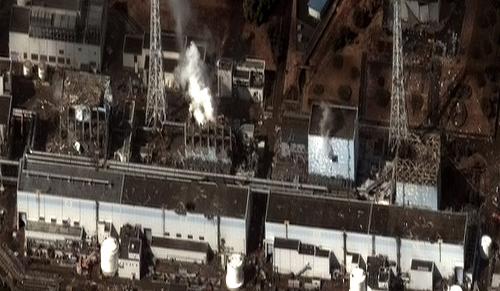 Fukushima Japan 2011Photo: Digital Globe CC 3.0 Unported no changes made
Fukushima Japan 2011Photo: Digital Globe CC 3.0 Unported no changes made
In June 2010 Hatoyama leaves politics and is succeeded by the Minister of Finance Naoto Kan. On Friday, March 11, 2011, Japan was hit by a very strong earthquake followed by a devastating Tsunami. As a result, major problems arise in the nuclear reactors at Fukushima. At the end of March 2011, the radiation in reactor 2 of the Fukushima nuclear power plant is 10 million times higher than normal. Workers who worked on the reactor are withdrawing. Radioactivity measurements by Greenpeace outside the evacuation zone around Fukushima, meanwhile, are alarmingly high. Japan's Prime Minister Nato Kan acknowledges that the situation in the damaged power plant is unpredictable. Yoshihiko Noda was sworn in as Japan's new Prime Minister in August 2011. Japan's ruling Democratic Party (DJP) elected the former finance minister as its new party leader, which meant Noda became Naoto Kan's successor. In the second round of the election, Noda (215 votes) defeated Trade Minister Banri Kaieda (177 votes). At that time, Noda was already the sixth prime minister in five years. In December 2012, Shinzo Abe became Japan's new Prime Minister. In July 2013, Abe's coalition also won the House of Lords elections. In late 2013 and early 2014, Japan quarrels with China over a number of islands and the division of airspace. In February 2015 Japan comes out of the economic recession. In July 2016, Abe's party won the parliamentary elections. In August 2016, Emperor Akihito declares during a video message that he wants to resign, in June 2017 the parliament makes this previously unheard-of decision possible and he will be succeeded in April 2019 by his son Naruhito. In August 2020, Abe will step down for health reasons. He will be succeeded by Yoshihide Suga in September.
Sources
Japan
Lonely Planet
Japan
Reader's Digest
Kamachi, N. / Culture and customs of Japan
Greenwood Press
Scott, D. / Japan
Van Reemst
Shelley, R. / Japan
Times Books
Somerwil, J. / Japan
Gottmer/Becht
Stefoff, R. / Japan
Chelsea House Publishers
CIA - World Factbook
BBC - Country Profiles
Copyright: Team The World of Info